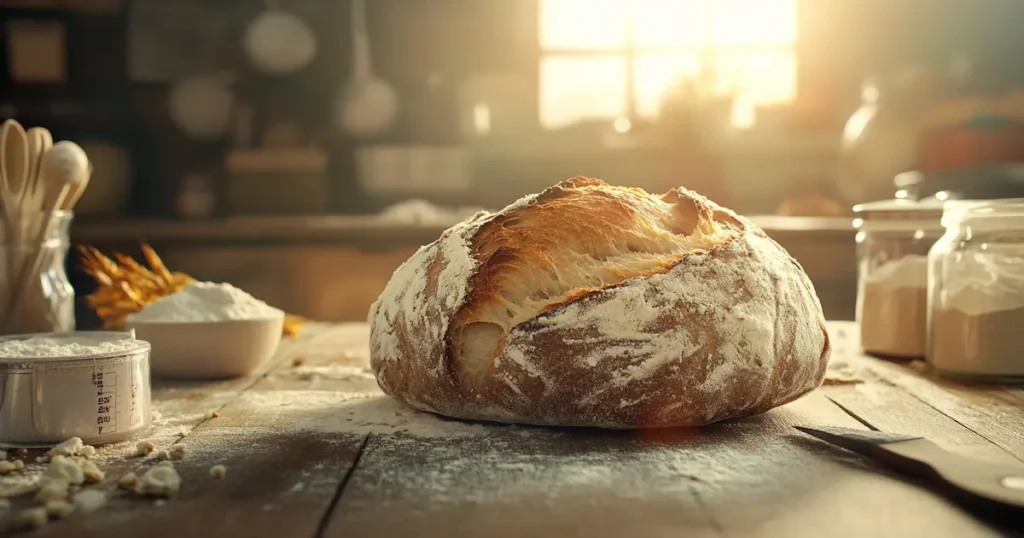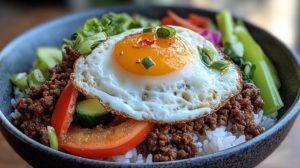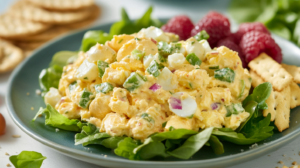Making bread at home can feel like an overwhelming task, especially when it involves kneading the dough for hours. But what if we told you there’s an easier way? The answer lies in the overnight bread no knead recipe! This simple yet foolproof method guarantees you soft, flavorful bread with minimal effort and time. 😍
With this technique, you only need a few basic ingredients and time. That’s it! A little patience, and you can enjoy a freshly baked loaf of bread, golden on the outside, airy on the inside. Whether you’re new to baking or have been doing it for years, this overnight bread no knead recipe will quickly become a kitchen favorite.
In this guide, we’ll show you everything you need to know—what ingredients you’ll need, how to make the dough, the secrets to baking perfect bread, and more. Ready to get started? Let’s dive in!
🍞 Introduction to No Knead Overnight Bread
What is No Knead Bread? 🤔
No knead bread is just what it sounds like—a bread that doesn’t need to be kneaded! Unlike traditional bread recipes, which require you to spend time kneading the dough to develop the gluten, this method allows you to mix the dough and leave it to rise overnight. The long resting period does the hard work for you, giving you a perfect loaf without any extra effort. 🌟
The beauty of overnight bread no knead lies in its simplicity. You don’t need any special equipment like mixers or dough hooks—just a bowl, spoon, and a bit of patience. The slow fermentation allows the flour to absorb water, making the dough sticky and easy to shape, even for beginners.
Why Choose an Overnight Bread Recipe? 🕒
Why opt for overnight bread no knead over regular bread recipes? Here are a few compelling reasons:
- Convenience: The overnight resting period means you can prepare the dough the night before and bake it the next day. No need to set aside hours for baking.
- Better Flavor: The extended fermentation period enhances the flavor of the bread. As the dough rests, the yeast produces carbon dioxide, developing the tangy flavor that gives artisan bread its unique taste.
- Minimal Effort: It’s incredibly easy! Just mix the ingredients, let the dough rise, and bake. No kneading, no hassle. 🔥
By the end of this article, you’ll know exactly how to make the best overnight bread no knead with ease!

Table of Contents
Table of Contents
🥖 Ingredients You’ll Need for Overnight Bread
Basic Ingredients for the Perfect No Knead Bread 🛒
The beauty of this recipe lies in its simplicity. For a perfect loaf, you’ll need just a few basic ingredients:
| Ingredient | Purpose |
|---|---|
| Flour | Forms the structure of the bread and provides texture. |
| Water | Activates the yeast and hydrates the flour. |
| Yeast | Helps the dough rise and develop flavor. |
| Salt | Adds flavor and controls the fermentation process. |
| Olive Oil (Optional) | Adds richness and flavor to the bread. |
How Each Ingredient Plays a Key Role 🥄
- Flour: The flour is what makes the bread. It provides the structure and absorbs the water, forming the dough. Choose all-purpose flour or bread flour for the best texture.
- Water: Water is essential for activating the yeast. It helps the flour absorb, giving the dough the right consistency.
- Yeast: Yeast is the magic ingredient that makes the bread rise. It ferments and produces carbon dioxide, which causes the dough to expand.
- Salt: Salt doesn’t just enhance the flavor; it also slows the fermentation process. This helps the dough rise more evenly.
- Olive Oil: A little bit of olive oil adds richness to the bread, but it’s completely optional.

🍞How to Make the Best Overnight Bread
Step-by-Step Instructions for Perfect Results 📝
Making overnight bread no knead is a breeze! Here’s how to do it:
- Combine Dry Ingredients
In a large mixing bowl, combine your flour, salt, and yeast. Stir them together so that the yeast and salt are evenly distributed. - Add Water
Gradually add water into the dry ingredients while mixing with a wooden spoon or your hands. Continue mixing until the dough comes together and becomes slightly sticky. - Rest the Dough
Cover the bowl with a damp cloth or plastic wrap. Let it rest for 12-18 hours at room temperature. The long resting period is key to developing the flavor and allowing the yeast to work its magic. - Shape the Dough
Once the dough has risen and developed some bubbles, transfer it to a floured surface. Gently shape it into a round loaf. Don’t knead the dough; just fold it over itself a couple of times to form the loaf. - Let it Rise
Place the shaped dough on a piece of parchment paper. Cover it with a towel and let it rise for 1-2 hours. - Bake the Bread
Preheat the oven to 450°F (230°C). Place a Dutch oven or baking pot inside the oven while it heats up. Once the oven is preheated, transfer the dough (with parchment paper) into the pot. Bake with the lid on for 30 minutes, then remove the lid and bake for an additional 15-20 minutes until the bread is golden brown. - Cool and Serve
Allow the bread to cool on a wire rack before slicing. This helps the bread firm up and makes it easier to slice.
Why Letting Dough Rest Overnight Makes a Difference ⏳
The extended resting period gives the yeast plenty of time to ferment the dough slowly, which results in better flavor and texture. The gluten develops naturally without the need for physical kneading. The long fermentation also helps improve the bread’s structure, making it chewy on the inside and crispy on the outside. 🌟
🧑🍳Tips for Getting the Perfect No Knead Bread Texture
Common Mistakes to Avoid ❌
Here are some mistakes to watch out for:
- Overmixing the Dough: Don’t overwork the dough! Since this is a no-knead recipe, just mix the ingredients until they come together. Let time and fermentation do the rest.
- Using the Wrong Flour: All-purpose flour is best, but if you’re looking for a chewier bread, you can use bread flour. Just keep in mind that whole wheat flour will need more water.
- Not Letting the Dough Rest Long Enough: The dough needs at least 12 hours to rise. Don’t rush it—this is the key to getting a great flavor.
- Not Preheating the Dutch Oven: Always preheat your Dutch oven or baking pot. A hot oven creates the perfect environment for the bread to rise and bake properly.
Troubleshooting Your Dough: How to Fix Issues 🔧
- Dough Too Dry: Add a bit more water to the dough during mixing. It should be slightly sticky.
- Dough Not Rising: If your dough isn’t rising, it might be too cold. Let it sit in a warmer area to encourage fermentation.

🔥Baking Your Overnight Bread
Choosing the Right Oven Temperature 🌡️
For overnight bread no knead, preheat your oven to 450°F (230°C). This high temperature helps create a beautiful golden crust while allowing the bread to rise evenly. Make sure your Dutch oven or baking pot is preheated as well. A hot pot gives the bread the perfect environment to bake.
How to Know When Your Bread is Perfectly Baked ✔️
The best way to check if your bread is done is by tapping the bottom of the loaf. If it sounds hollow, it’s ready! You can also use a thermometer to check the internal temperature—your bread should reach around 200°F (93°C).
💡 How to Serve Your Overnight No Knead Bread
Best Toppings and Pairings 🧈
- Butter and Jam: A classic combination that never gets old. Spread butter and your favorite jam on warm bread for a simple treat.
- Garlic Bread: Slice the loaf, brush with garlic butter, and toast for a savory snack or side dish.
- Sandwiches: This bread makes an excellent base for sandwiches, whether you’re making a classic BLT or a veggie-packed sandwich.
🥖 Variations of No Knead Overnight Bread
One of the great things about overnight bread no knead is how versatile it is. You can experiment with different ingredients to create unique variations that suit your taste preferences. Whether you enjoy sweet or savory bread, the possibilities are endless. Let’s explore a few variations you can try.
Sweet vs. Savory Versions 🍯🍽️
Sweet Variations 🍇
If you’re someone who loves a touch of sweetness in your bread, why not add some dried fruits or spices? Here are a few options:
- Cinnamon Raisin Bread: Add ground cinnamon and raisins to the dough. The combination of the sweet and spiced flavors with the bread’s chewy texture makes for a comforting loaf.
- Cranberry Orange Bread: Add dried cranberries and orange zest to the dough for a refreshing, slightly tangy flavor.
- Apple Spice Bread: Incorporate diced apples and a sprinkle of cinnamon and nutmeg for a warm, sweet bread that’s perfect for fall.
Savory Variations 🌿🧀
For those who prefer savory bread, you can incorporate ingredients like herbs, cheese, or garlic into your overnight bread no knead recipe. Here are a few ideas:
- Rosemary Garlic Bread: Add fresh rosemary and roasted garlic to the dough for a fragrant and savory bread. This version pairs wonderfully with olive oil and balsamic vinegar.
- Cheese and Herb Bread: Mix in grated Parmesan cheese, garlic, and fresh herbs like thyme or oregano. This bread makes a great side for soups or pasta dishes.
- Olive Bread: Add a handful of green or black olives to the dough for a Mediterranean-inspired loaf. This bread is great for serving with antipasto platters or dipping in olive oil.
Adding Nuts and Seeds 🌰
Nuts and seeds can be a delicious and healthy addition to your overnight bread no knead. Here are some ideas:
- Walnut Bread: Add chopped walnuts for a nutty, crunchy texture.
- Sunflower Seed Bread: Add sunflower seeds for extra crunch and a subtle nutty flavor.
- Mixed Seed Bread: Combine flax seeds, chia seeds, and pumpkin seeds for a hearty, nutrient-packed bread that’s full of fiber and healthy fats.
🧑🍳The Health Benefits of No Knead Bread
When making bread at home, you have full control over the ingredients. This gives you the option to create a healthier loaf by using whole grains or reducing the amount of sugar and fat. Let’s take a look at why overnight bread no knead can be a healthier alternative to store-bought bread.
Why This Recipe is a Healthier Alternative 🌱
- No Artificial Additives: Store-bought bread often contains preservatives and artificial additives to extend its shelf life. With overnight bread no knead, you only use natural ingredients, which is better for your health.
- Fewer Refined Ingredients: You can use whole wheat flour or other whole grains for added fiber, which supports digestion and heart health. Whole wheat also has a lower glycemic index than white flour, which means it has a slower effect on blood sugar levels.
- Customization: When you make bread at home, you can adjust the recipe to fit your health needs. For example, you can choose to use olive oil instead of butter for a healthier fat option or reduce the amount of salt.
Better Digestion with Longer Fermentation 🍞🧠
One of the key health benefits of overnight bread no knead is the fermentation process. The long resting period allows the yeast to break down some of the gluten in the dough, which can make the bread easier to digest. This makes it a great option for individuals who are sensitive to gluten or those looking to improve their gut health.
Furthermore, the fermentation process can help lower the bread’s glycemic index, making it a better choice for people trying to manage their blood sugar levels. The natural fermentation helps to balance the sugar levels in the bread and makes it a more balanced food option.
🍞Frequently Asked Questions (FAQs)
Here are the answers to some of the most commonly asked questions about overnight bread no knead. If you’ve ever wondered about substitutions, storage, or tips for making your bread even better, these answers will help.
Can I Use Whole Wheat Flour for No Knead Bread? 🌾
Absolutely! Whole wheat flour can be used in place of all-purpose flour for a more nutritious loaf. However, keep in mind that whole wheat flour absorbs more water than all-purpose flour, so you may need to adjust the water in your recipe. Whole wheat bread will also be denser, but it will have a rich, nutty flavor and a higher fiber content, making it a great choice for those looking to increase their whole grain intake.
How Long Does the Dough Need to Rest? ⏱️
The dough should rest for a minimum of 12 hours, but 18 hours is ideal for the best flavor and texture. During this time, the yeast will work its magic, and the dough will slowly ferment. The longer you allow the dough to rest, the more flavorful the bread will be. Don’t rush the process—this is one of the secrets to making great overnight bread no knead!
How Can I Store Leftover Bread? 🍞
If you have leftover overnight bread no knead, you can store it at room temperature for up to 3 days. Wrap it in a clean kitchen towel or store it in a paper bag to maintain its freshness. Avoid using plastic, as it can make the bread soggy. If you want to store the bread for longer, freezing is a great option. Simply wrap it tightly in plastic wrap or aluminum foil and place it in a freezer-safe bag. When you’re ready to enjoy it, let it thaw at room temperature or warm it in the oven.
Can I Make This Recipe Gluten-Free? 🌾🚫
Yes, you can make a gluten-free version of overnight bread no knead! To do this, substitute the all-purpose flour with a gluten-free flour blend that is designed for baking. Be sure to follow the instructions on the gluten-free flour package, as it may require different amounts of water or other adjustments to achieve the perfect dough consistency.
How Do I Know When My Bread is Fully Baked? 🍞✔️
There are a couple of ways to check if your bread is fully baked:
- Tap Test: When you tap the bottom of the loaf, it should sound hollow. This indicates that the bread has cooked through.
- Thermometer: If you have a kitchen thermometer, the internal temperature of the bread should reach 200°F (93°C).
🌟Enjoy the Simplicity of No Knead Bread
Now you know everything there is to know about making overnight bread no knead. This simple recipe allows you to enjoy freshly baked bread with minimal effort, making it perfect for busy mornings or casual get-togethers. With just a few basic ingredients and a little patience, you can bake bread that rivals store-bought versions, but with a richer, more complex flavor.
From adding your favorite herbs or fruits to adjusting the flour, the variations are endless. So, get creative, and enjoy the process! Whether you’re making bread for yourself, your family, or your friends, overnight bread no knead is sure to be a hit.
Don’t forget to share this recipe with others who might enjoy it, and keep experimenting with new twists on this classic recipe!
“Love homemade bread? 🍞✨ Join our community on Facebook and Pinterest for more delicious recipes, baking tips, and inspiration! Follow us today and never miss a fresh, easy recipe! 🙌”
Print
Best Overnight Bread Recipe: No Knead, Easy & Delicious! 🍞
This simple and easy overnight no-knead bread is perfect for those looking for a flavorful, crusty bread with minimal effort.
- Total Time: 12-18 hours (overnight)
- Yield: 1 loaf 1x
Ingredients
- 3 cups all-purpose flour
- 1 1/2 teaspoons salt
- 1/2 teaspoon active dry yeast
- 1 1/2 cups lukewarm water
Instructions
- In a large bowl, combine the flour, salt, and yeast.
- Add the lukewarm water and stir until the dough comes together.
- Cover the bowl with plastic wrap or a damp towel and let sit for 12-18 hours at room temperature.
- Preheat your oven to 450°F (230°C), placing a Dutch oven inside to heat.
- Once the oven is preheated, carefully transfer the dough into the hot Dutch oven and cover with the lid.
- Bake for 30 minutes. After 30 minutes, remove the lid and bake for an additional 15-20 minutes until the bread has a golden-brown crust.
- Cool on a wire rack before slicing.
Notes
This bread is perfect for serving with soups, stews, or as a side to any meal. Add herbs or seeds for extra flavor!
- Prep Time: 15 minutes
- Cook Time: 45 minutes
- Category: Bread
- Method: Baked
- Cuisine: American
Nutrition
- Serving Size: 1 slice
- Calories: 120
- Sugar: 2g
- Sodium: 300mg
- Fat: 1g
- Saturated Fat: 0g
- Unsaturated Fat: 0g
- Trans Fat: 0g
- Carbohydrates: 24g
- Fiber: 1g
- Protein: 3g
- Cholesterol: 0mg
Keywords: no-knead bread, easy bread, homemade bread, overnight bread



